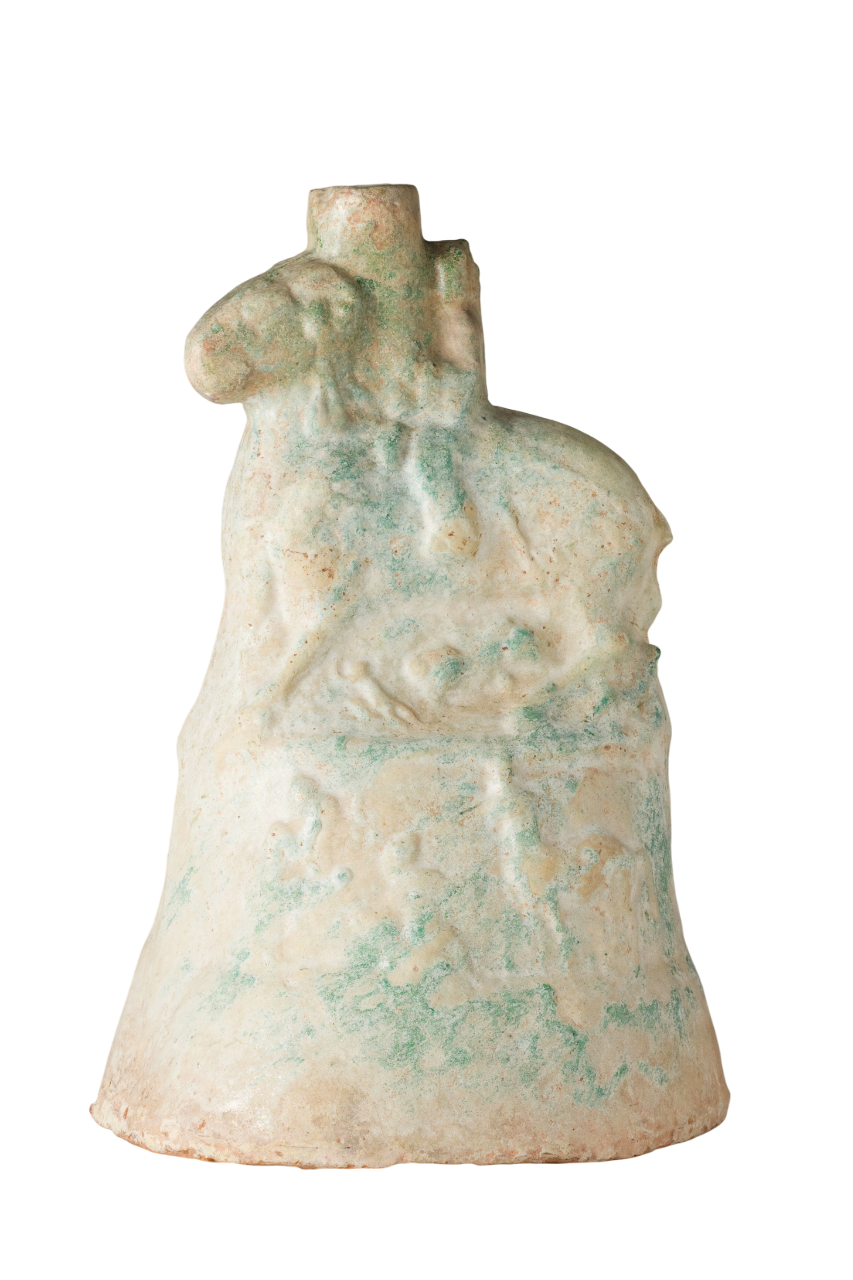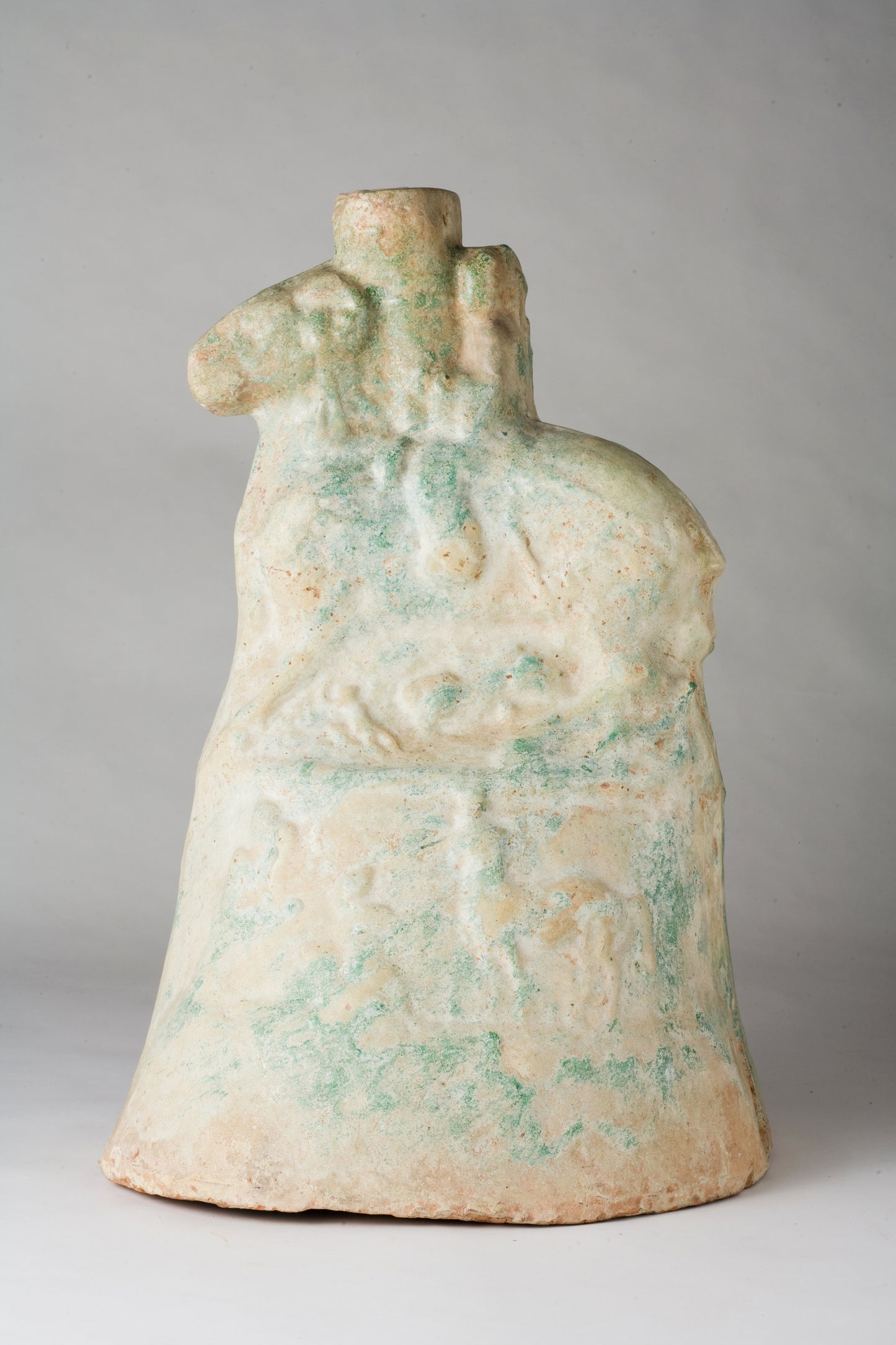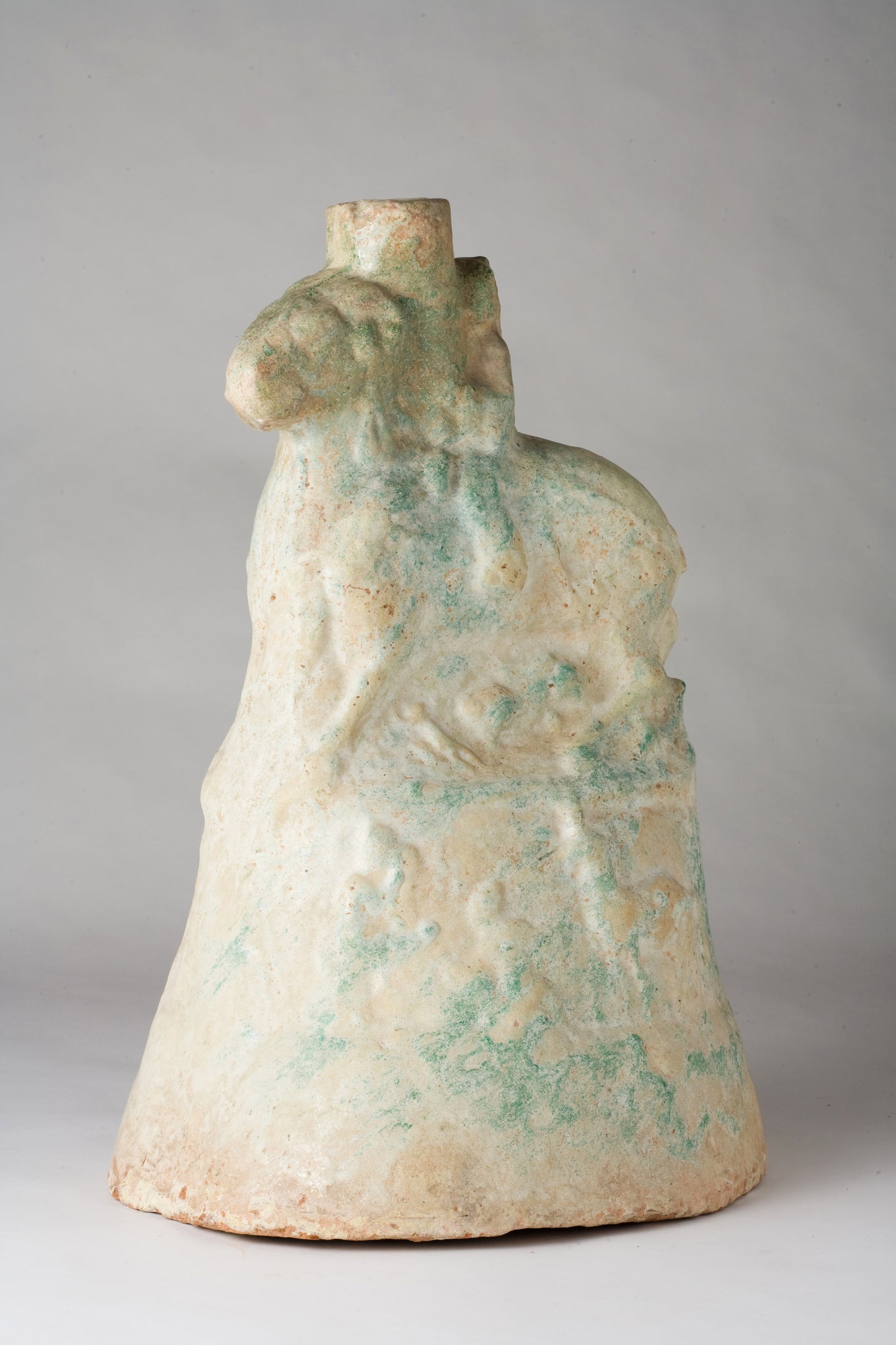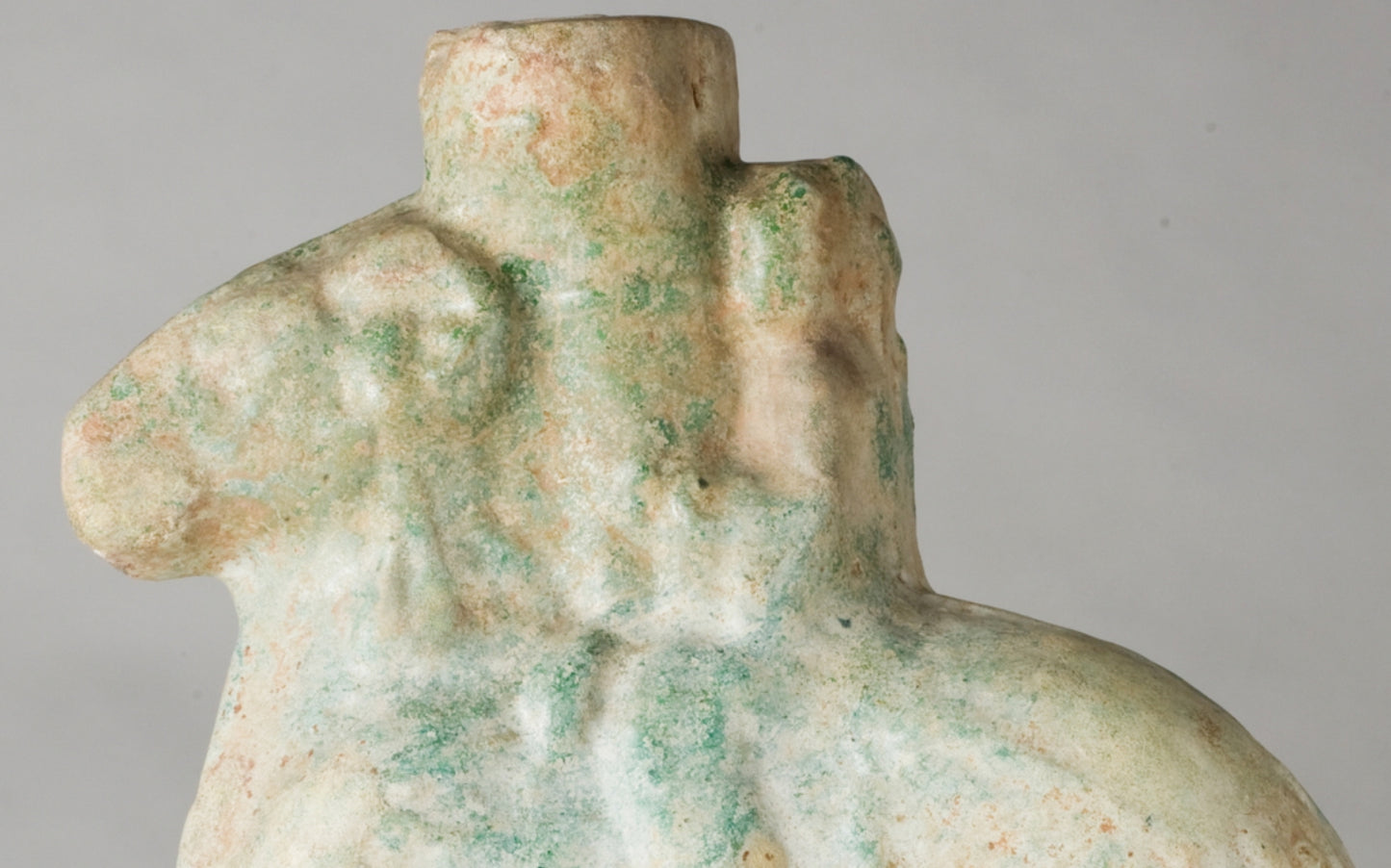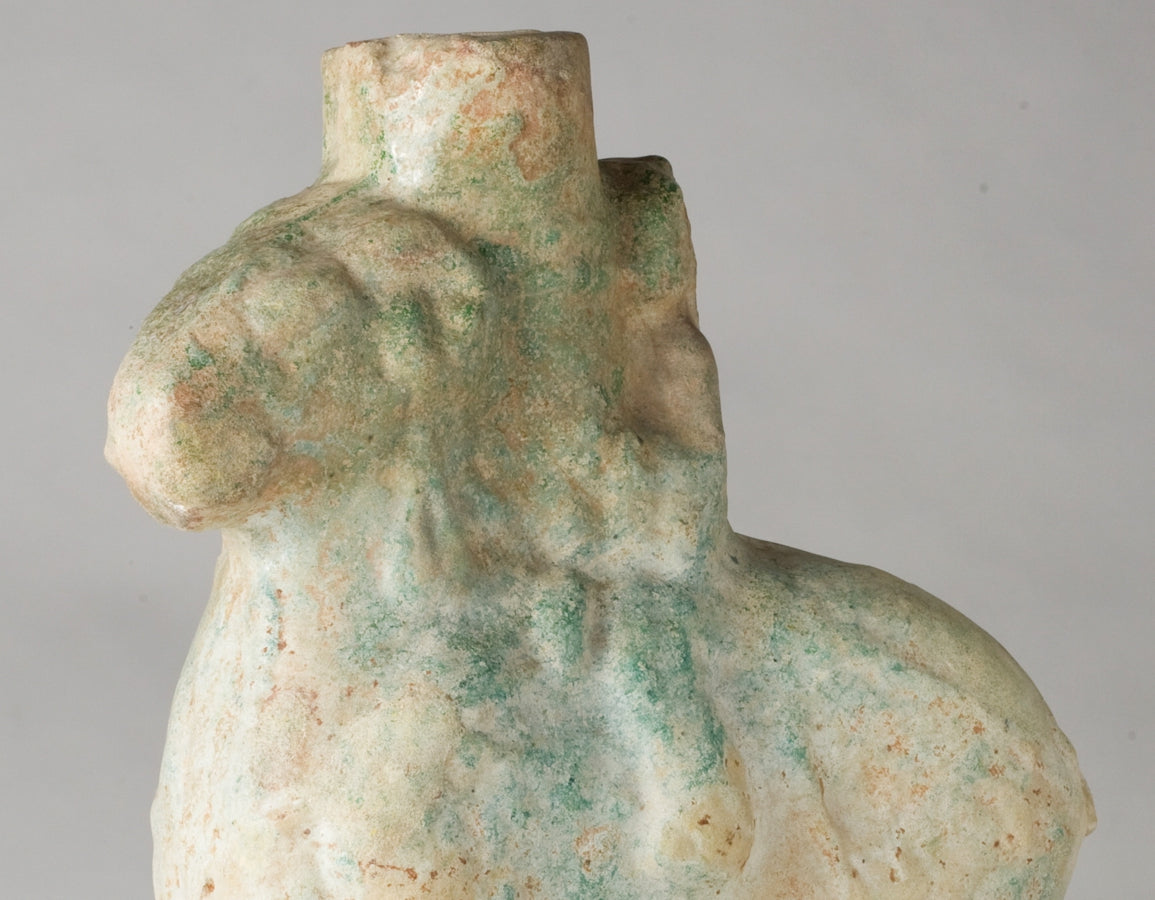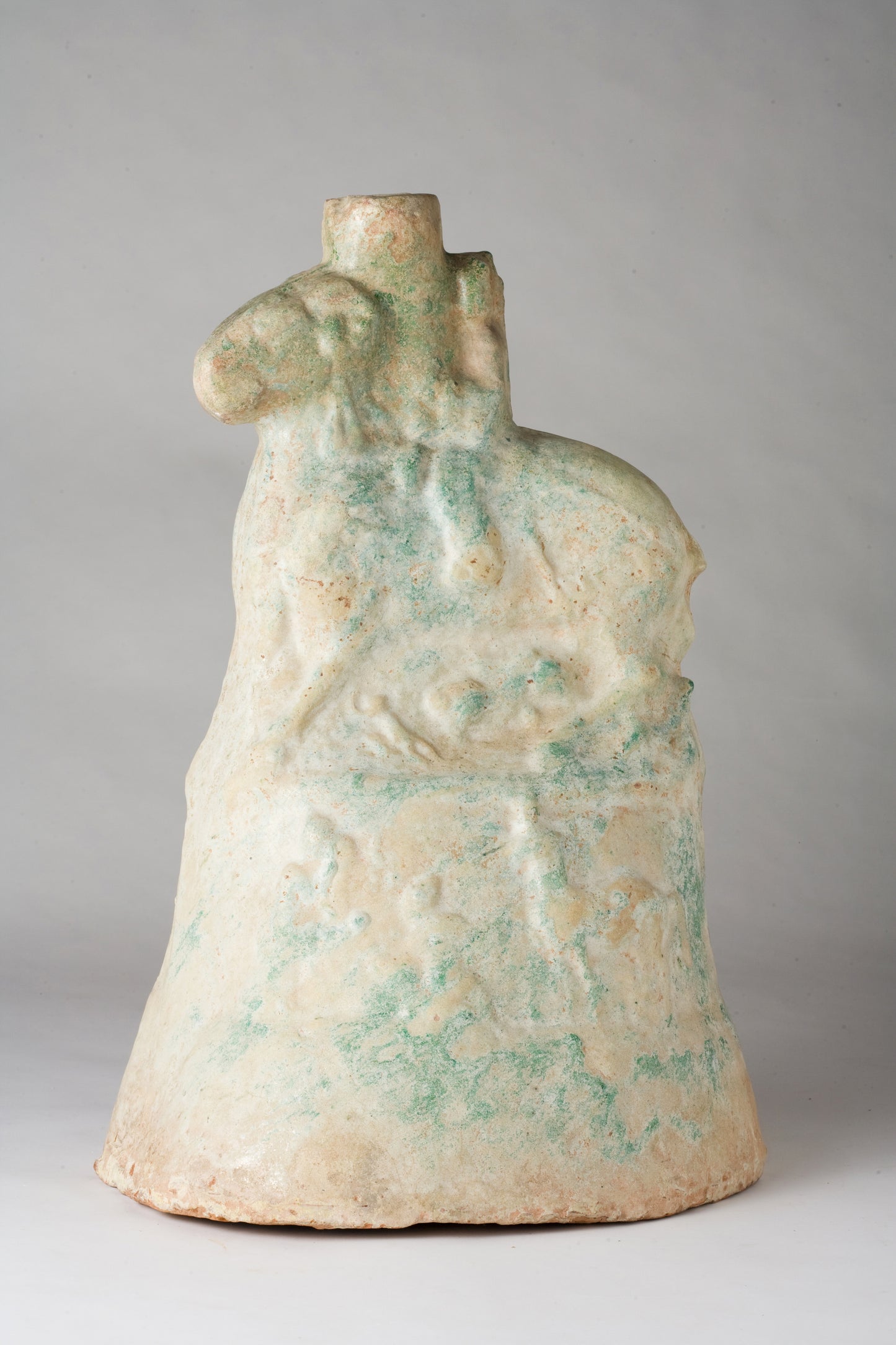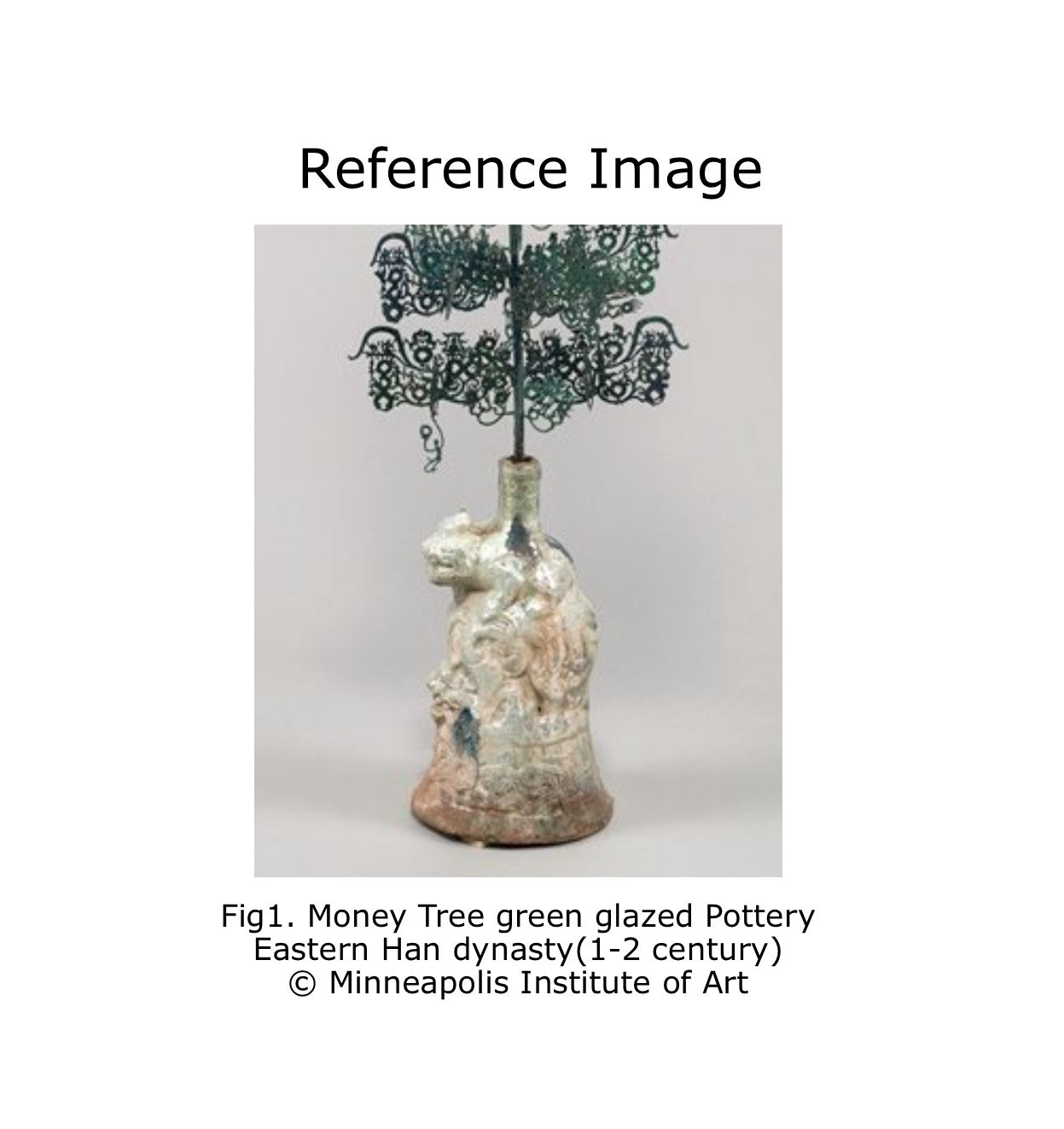AUA Oriental Art
A ‘Money Tree’ Green-Glazed Pottery, Han Dynasty
A ‘Money Tree’ Green-Glazed Pottery, Han Dynasty
Couldn't load pickup availability
This piece, directly referred to as a Money Tree, is a captivating work that embodies wishes for material prosperity. It takes center stage in the Asian collections of institutions such as the Asian Art Museum in San Francisco, the Minneapolis Institute of Art (MIA), the Portland Art Museum, and the Tokyo National Museum. While it does not include a bronze version, this piece serves as the foundation—the very roots—of the Money Tree tradition in the form of a vase.
Historically, Money Trees were crafted with a bronze trunk and branches set into a ceramic base. They were adorned with coin-shaped decorations along the lower sections of their lattice-like branches, the currency of the Han period. These coin motifs symbolized wealth and abundance, essential for nourishing the spirit in the afterlife. More than just funerary objects, these trees represented the continuous renewal of prosperity and an unending flow of fortune.
Period : Han Dynasty (206 BC - 220 AD)
Medium : Earthenware with Green Lead glaze
Dimension : 25cm(Diameter) x 40.5cm(Height)
Provenance : The piece was acquired in Hong Kong in late 1990s.
Condition : Good
Reference:
1) Christies Newyork 22 MAR 2019 - A RARE AND LARGE BRONZE AND GREEN-GLAZED POTTERY ‘ MONEY TREE’ - Lot 1605
(Price realised : 350,000 USD / Type : Closely related)
https://www.christies.com/en/lot/lot-6194528
2) MIA - Accession Number2002.47a-rrr - Money Tree
(Type : Closely related)
https://new.artsmia.org/programs/teachers-and-students/teaching-the-arts/artwork-in-focus/money-tree
*'Money Tree
The Money Tree is not just an ancient artifact but a powerful symbol of boundless fortune and renewal. According to Chinese folklore, some believed that shaking the branches of a Money Tree could cause coins to rain down, granting wealth to those who possessed it. This idea of self-generating prosperity made it a revered object, particularly among merchants and aristocrats who sought continuous financial success even in the afterlife.
One legend tells of a poor scholar who discovered an old Money Tree buried in the ruins of a Han Dynasty tomb. Though the tree itself held no real coins, fortune soon followed him—he passed the imperial exams, married into a wealthy family, and lived a life of abundance. Whether by fate or the tree’s auspicious energy, its presence was seen as a harbinger of prosperity, reinforcing its reputation as a conduit of everlasting wealth.
Share
